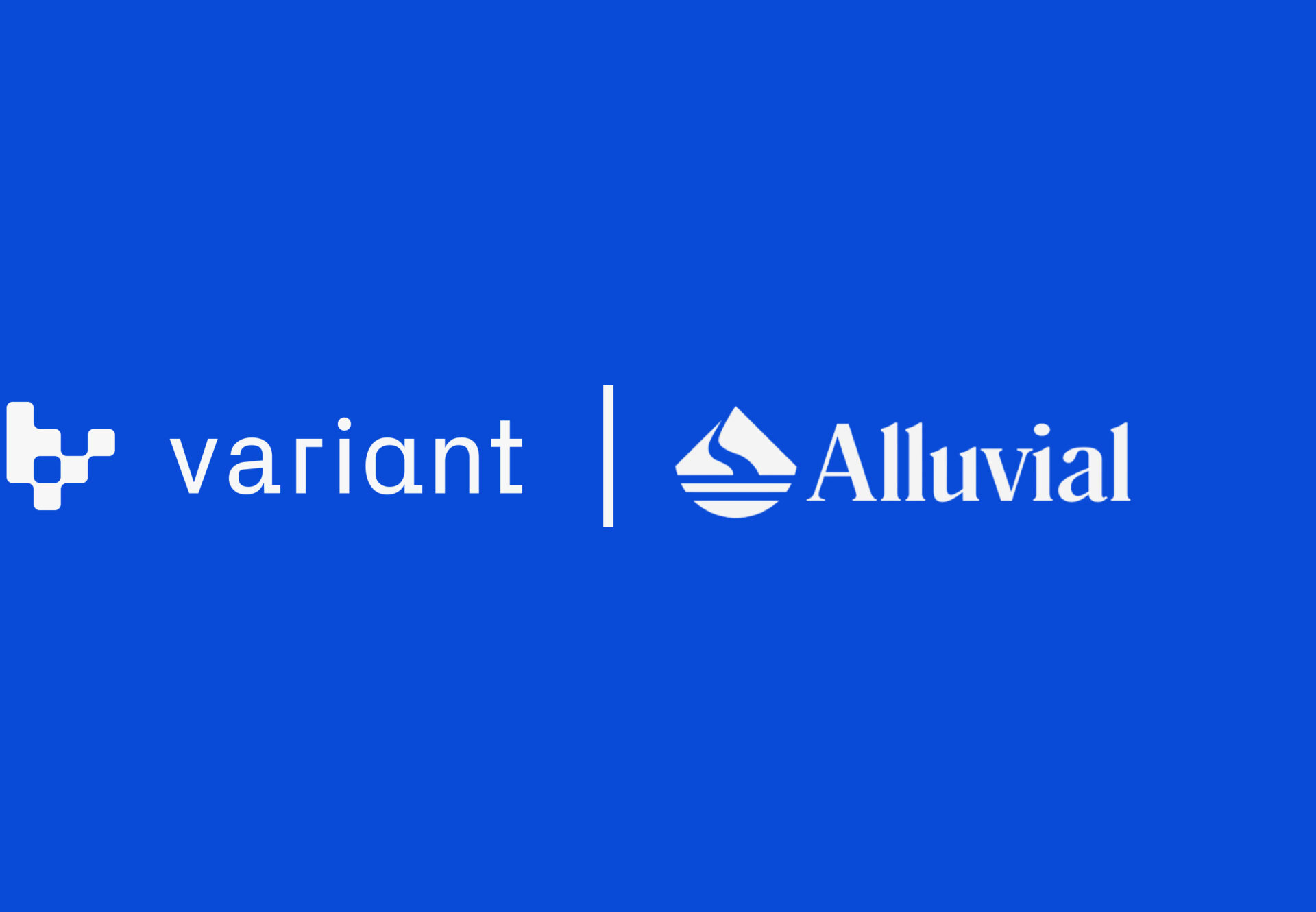Jesse Walden

Investing in Alluvial: Liquid Staking for Institutions
At Variant, we believe institutional demand for compliance-focused staking solutions will grow as the Ethereum ecosystem expands into the mainstream. Compelling evidence supports this claim. A recent Kiln survey revealed that about 68% of institutions holding ETH plan to begin staking or stake more post-Shapella upgrade. In fact, within a week of the upgrade, institutional staking service providers recorded over 148,000 ETH in inflows.
With the steady market growth of ETH staking, the adjacent category of liquid staking has quickly emerged. Liquid staking tokens (LSTs) are a claim on the underlying staked asset and the yield it bears. Because LSTs allow stakers to make their underlying assets productive, we believe they will be considered strictly better than holding the corresponding L1 token in the long run.
We like to use the technologies we invest in, and one thing we’ve been looking for is a non-custodial liquid staking protocol that meets the needs of institutional investors, ourselves included. Alluvial has a solution we’re excited about.
In March, Alluvial launched the Liquid Collective, a liquid staking protocol purposely built to assuage the operational and regulatory concerns of institutional users—corporations, foundations, hedge funds, and VCs. We were wrestling with the following considerations, each of which Alluvial has thoughtfully addressed:
- Institutions need to know who they are doing business with to mitigate operational risk.
When designing the Liquid Collective, Alluvial looked at liquid staking from the perspective of an organization’s compliance department.
First, the protocol is a permissioned ecosystem operated by established service providers who have the self-interest and legal obligation to perform the necessary KYC/AML checks on new participants.
Second, the Liquid Collective provides institutional clients rigorous operational due diligence materials on service and sub-service providers so they can make educated decisions about risks and returns.
Finally, while many liquid staking providers diversify risk by splitting ETH among multiple node operators, the Liquid Collective goes a step further, using only established institutional providers, such as Coinbase Cloud, Staked, and Figment. This diversification within a permissioned validator set directly reduces vendor-specific slashing risk and narrows client, cloud, and geography risk. And as more validators are accepted into the pool, participants will benefit from further diversification.
- Institutions want optionality.
The point of liquid staking tokens is that they’re supposed to be liquid, providing optionality of quicker liquidity and DeFi composability that natively staked ETH can’t.
Notably, withdrawal queue liquidity has been a glaring drawback of staking service solutions. With a highly variable exit queue, unstaking can take days. LsETH is able to represent both staked ETH and rewards earned by following the simple, familiar ERC-20 cToken model. This enables LsETH’s composability while providing holders with the ability to control their network reward flow.
Moreover, as more participants join the protocol, it can create a liquidity network effect. With more ETH flowing in both directions, stakers and unstakers can be internally matched to enable immediate redemption without having to sell LsETH. This option may be preferable for institutions with strict compliance policies.
- Institutions want to reduce overhead.
Institutions have priorities other than liquidity, which Alluvial seeks to address. For example, restaking rewards manually is inefficient, not only curbing yield but also increasing the number of staking addresses to manage. The Liquid Collective’s protocol automates and abstracts away the restaking process, reducing overhead and headaches for an institution’s operations. Additionally, the protocol’s built-in slashing coverage, including Nexus Mutual insurance, offers additional peace of mind.
- We seek out companies aligned with our thesis of user ownership.
At Variant, we believe web3 will transform users into owners. That’s no less true of institutional actors. Each platform participant — from early integrators such as Coinbase and Kraken to tech providers like Kiln — will hold governance tokens and is responsible for operating the protocol as it incentivizes new participants to join and decentralizes further.
These points were top of mind in our consideration as a protocol participant. The Alluvial team’s thoughtful protocol design, as well as the quality of integrations, is evidence of their ability to execute at the highest level.
CEO Mara Schmiedt joined the company after a successful tenure as Head of Sales at Coinbase Cloud. In her previous role as a strategy manager at ConsenSys, Mara was producing staking research and reports well before LSTs were first introduced. Co-founders Nicolas Maurice (CTO) and Matt Leisenger (CPO) have also been active in the domain for years. Nicolas spent four years as an engineer at ConsenSyns before becoming CTO at Kiln, a top staking service provider and Liquid Collective member. Matt is a former product lead at Figment, another major staking service provider and member of the Liquid Collective.
We’re excited to co-lead Alluvial’s Series A round and support the team’s vision.
+++
Disclaimer: This post is for general information purposes only. It does not constitute investment advice or a recommendation or solicitation to buy or sell any investment and should not be used in the evaluation of the merits of making any investment decision. It should not be relied upon for accounting, legal or tax advice or investment recommendations. You should consult your own advisers as to legal, business, tax, and other related matters concerning any investment. Certain information contained in here has been obtained from third-party sources, including from portfolio companies of funds managed by Variant. While taken from sources believed to be reliable, Variant has not independently verified such information. Variant makes no representations about the enduring accuracy of the information or its appropriateness for a given situation. This post reflects the current opinions of the authors and is not made on behalf of Variant or its Clients and does not necessarily reflect the opinions of Variant, its General Partners, its affiliates, advisors or individuals associated with Variant. The opinions reflected herein are subject to change without being updated.


